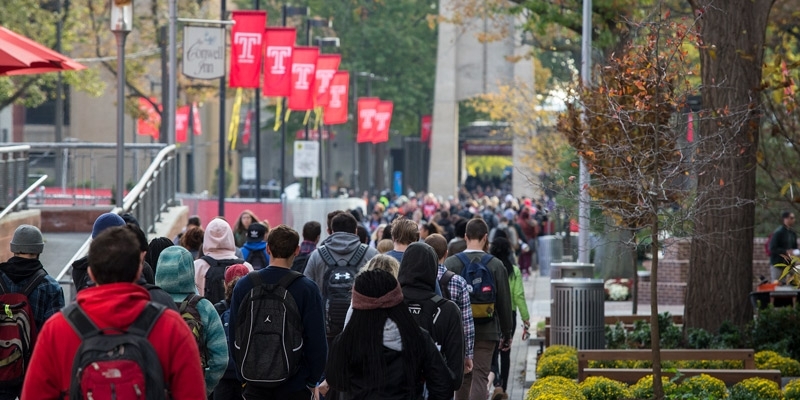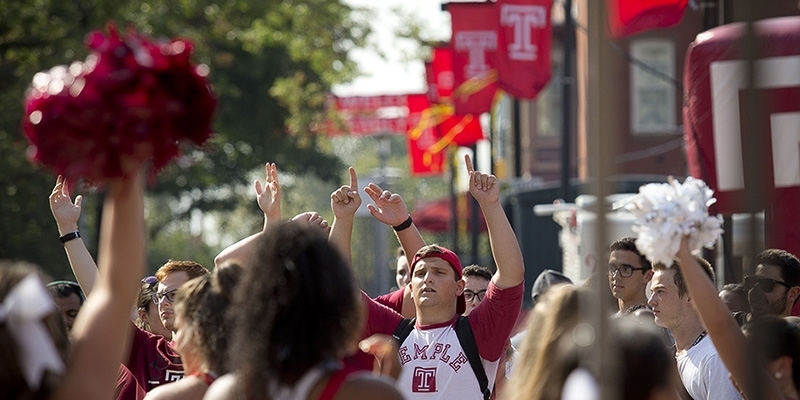Posted August 10, 2017
Show me the MONEY rankings
Temple jumped dramatically in a ranking of quality, affordability and outcomes.

Photography By:
Betsy Manning
With new measures including socioeconomic mobility and alumni earnings considered in the latest MONEY rankings, Temple jumped 143 places on the Best Colleges for Your Money 2017 list.
In a ranking that measures educational quality, affordability and outcomes—including the socioeconomic mobility and earnings of alumni—Temple University and its graduates are headed in the same direction: up.
MONEY’s Best Colleges for Your Money 2017, released earlier this summer, ranks Temple No. 160 out of 711 colleges on the list (taken from an overall pool of 2,400 schools). Temple jumped 143 places from last year.
Here’s an overview of the ranking, why it matters and how Temple’s ranking improved so dramatically.
What’s the ranking?
MONEY has been publishing its Best Colleges for Your Money rankings for four years. It explores the true costs and values of colleges, as well as “reliable indicators of alumni financial success.”
How does the ranking work?
In this year’s ranking, the categories of quality of education, affordability and outcomes were weighted equally. Within those categories, 27 factors were considered, including six-year graduation rate, a “value-added” graduation rate—the difference between a school’s expected and actual graduation rates—net price of a degree and alumni earnings. According to a separate ranking by U.S. News & World Report, Temple ranks No. 20 nationally in its graduation rate performance.
What’s different this year?
New factors considered in this year’s ranking focused on outcomes, including measures of socioeconomic mobility and additional data on alumni earnings.
Why does this matter for Temple?
In order to be ranked, colleges must have a graduation rate that was at or above the median for its institutional category (public or private) and have a high “value-added” graduation rate. MONEY cites data from The Equality of Opportunity Project that finds 36 percent of low-income students at Temple achieve socioeconomic mobility by attaining upper-middle class jobs early in their careers.


